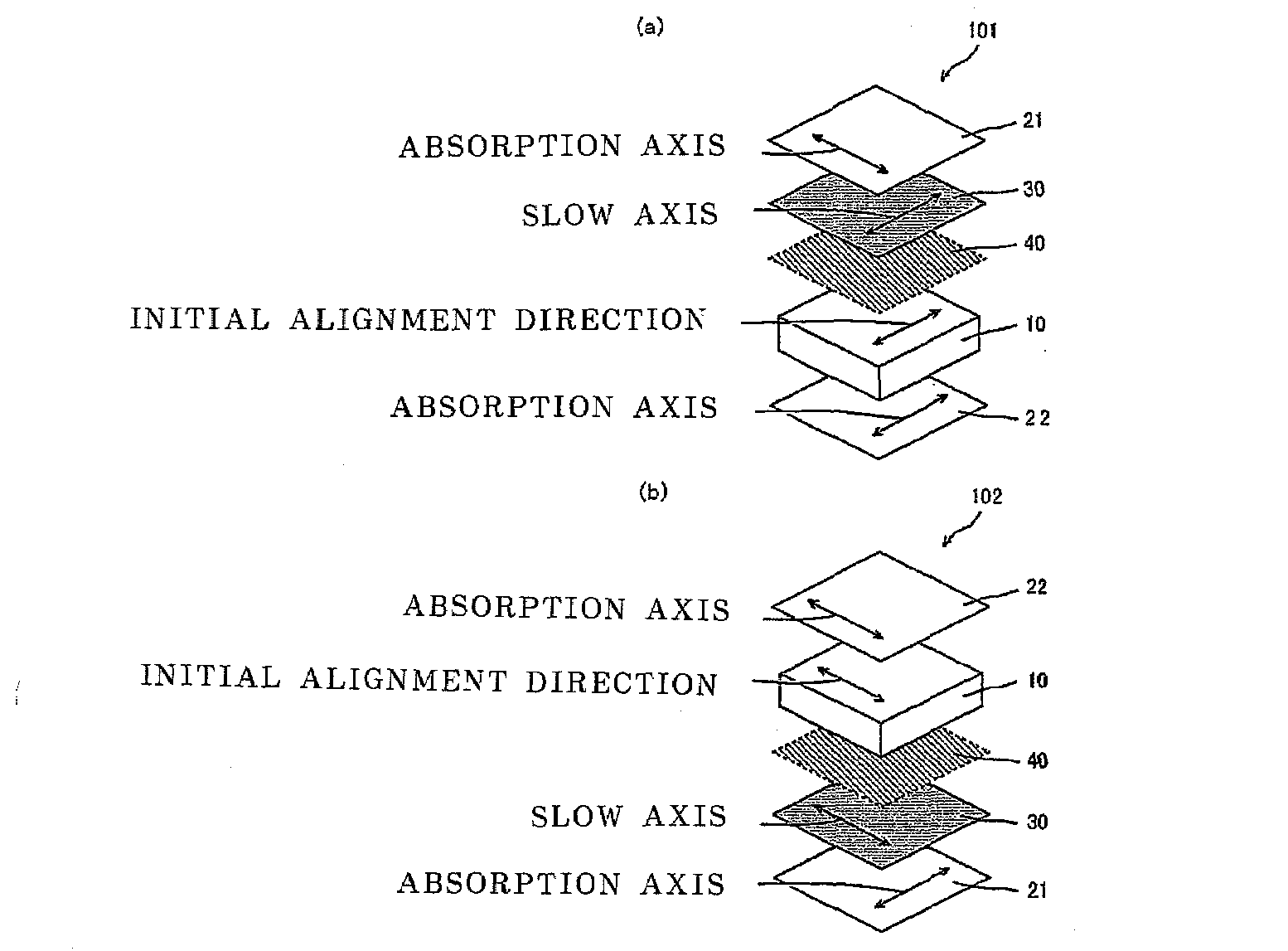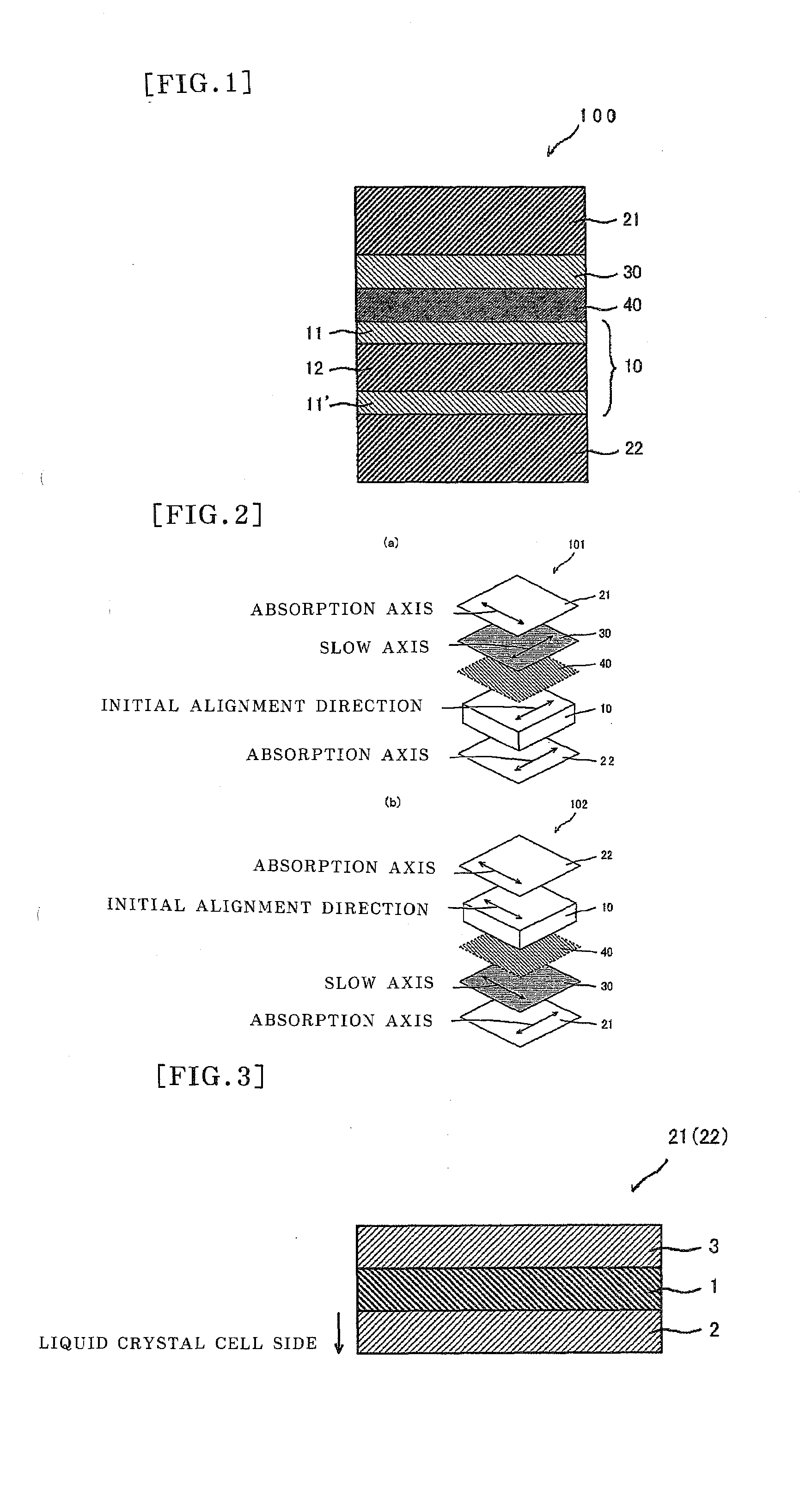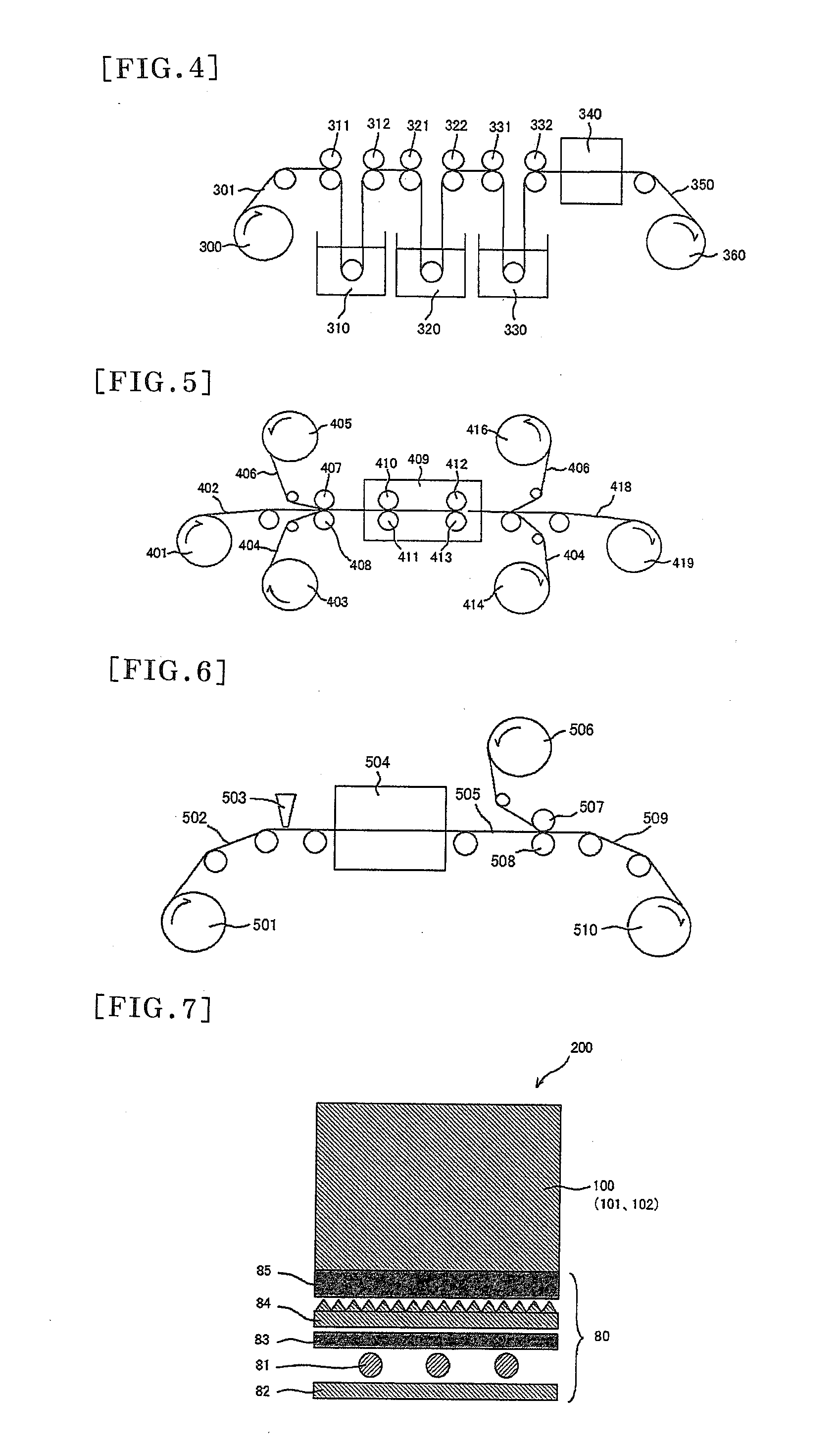Liquid crystal display panel and liquid crystal display
a liquid crystal display panel and liquid crystal display technology, applied in the field of liquid crystal display panels and liquid crystal displays, can solve the problems of difficult separation of laminated films, difficult to satisfy conflicting features, and light leakage or significant color changes, and achieve the effect of good adhesive properties and significant increase in the productivity of liquid crystal displays
- Summary
- Abstract
- Description
- Claims
- Application Information
AI Technical Summary
Benefits of technology
Problems solved by technology
Method used
Image
Examples
reference example 1
[0255]A shrinkable film A (a 60 μm-thick, polypropylene-containing, biaxially-stretched film (“TORAYFAN BO 2873” (trade name) manufactured by TORAY INDUSTRIES, INC.) was bonded to both sides of a 100 μm-thick polymer film containing a resin of a hydrogenated ring-opening polymer of a norbornene monomer (a norbornene resin) (“ZEONOR ZF-14-100” (trade name) 1.52 in average refractive index, 136° C. in Tg, 3.0 nm in Re[590], and 5.0 nm in Rth[590], manufactured by OPTES INC.) with an acrylic pressure-sensitive adhesive layer (15 μm in thickness) interposed therebetween. The laminated film was then held in the machine direction of the film by means of a roll stretching machine and stretched to 1.38 times in an air circulation type oven at 146° C. After the stretching, each shrinkable film A was separated together with each acrylic pressure-sensitive adhesive layer so that a retardation film was prepared. The retardation film was named Retardation Film A, and its properties are shown in ...
reference example 5
[0257]A shrinkable film A was bonded to both sides of a 130 μm-thick polymer film(“ARTON FLZU 130D0” (trade name) 78,200 in weight average molecular weight, 1.53 in average refractive index, 135° C. in Tg, 3.0 nm in Re[590], and 5.0 nm in Rth[590], manufactured by JSR Corporation) containing a resin of a hydrogenated ring-opening polymer of a norbornene monomer (norbornene resin) with an acrylic pressure-sensitive adhesive layer (15 μm in thickness) interposed therebetween. The laminated film was then held in the machine direction of the film by means of a roll stretching machine and stretched to 1.38 times in an air circulation type oven at 146° C. After the stretching, each shrinkable film A was separated together with each acrylic pressure-sensitive adhesive layer so that a retardation film (named Retardation Film E) was prepared. Its properties are shown in Table 1. The retardation film had a refractive index ellipsoid satisfying the relation nx>nz>ny, and its wave dispersion (D...
reference example 8
[0258]Retardation Film H was prepared using the process of Reference Example 5, except that the draw ratio was 1.43 times and that a shrinkable film B (a 60 μm-thick, polypropylene-containing, biaxially-stretched film) was used instead. Its properties are shown in Table 1. This retardation film had a refractive index ellipsoid satisfying the relation nx>nz>ny, and its wave dispersion (D) was 1.00. The physical properties of the shrinkable film B are shown in Table 2.
PUM
| Property | Measurement | Unit |
|---|---|---|
| light wavelength | aaaaa | aaaaa |
| light wavelength | aaaaa | aaaaa |
| thickness | aaaaa | aaaaa |
Abstract
Description
Claims
Application Information
 Login to View More
Login to View More - R&D
- Intellectual Property
- Life Sciences
- Materials
- Tech Scout
- Unparalleled Data Quality
- Higher Quality Content
- 60% Fewer Hallucinations
Browse by: Latest US Patents, China's latest patents, Technical Efficacy Thesaurus, Application Domain, Technology Topic, Popular Technical Reports.
© 2025 PatSnap. All rights reserved.Legal|Privacy policy|Modern Slavery Act Transparency Statement|Sitemap|About US| Contact US: help@patsnap.com



